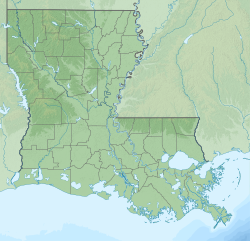| Tournament information | |
|---|---|
| Location | Baton Rouge, Louisiana |
| Established | 1952 |
| Course | Baton Rouge Country Club |
| Par | 72 |
| Tour | PGA Tour |
| Format | Stroke play |
| Prize fund | US$20,000 |
| Month played | March |
| Final year | 1962 |
| Tournament record score | |
| Aggregate | 266 Arnold Palmer (1961) |
| To par | −14 Arnold Palmer (1961) −14 Joe Campbell (1962) |
| Final champion | |
| | |
| Location map | |
Location in the United States Location in Louisiana | |
The Baton Rouge Open Invitational, first played as The Baton Rouge Open, was a PGA Tour event that was played in Baton Rouge, Louisiana in the 1950s and early 1960s. It was played at the Baton Rouge Country Club every year except 1961 when the event was played at Sherwood Forest Country Club. The Baton Rouge Country Club's par-72, 18-hole "Baton Rouge" course was designed by Joseph S. Finger and opened in 1916. [1]

